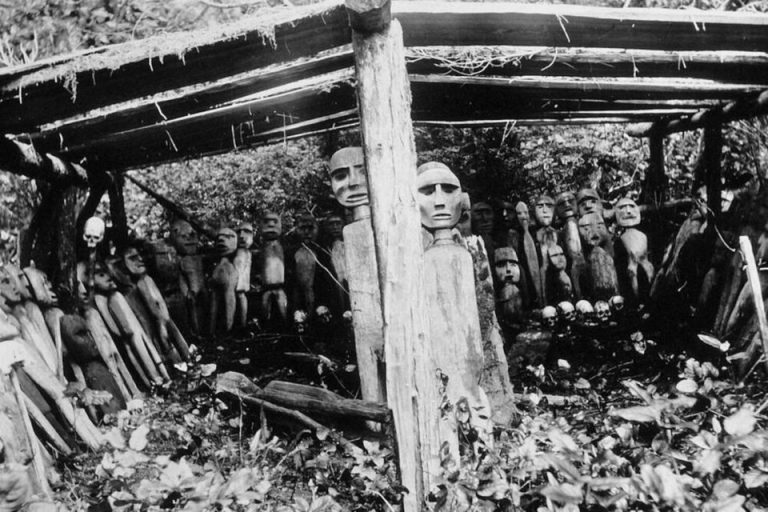

The American Museum of Natural History is finally relinquishing the Whalers Washing House, consisting of four wooden whales, 88 carved figures and 16 ancestral remains. COURTESY AMERICAN MUSEUM OF NATURAL HISTORY
Elder Margaretta James (GRSJ Masters Student) was part of a Mowachaht/Muchalaht First Nation delegation that recently went to New York to retrieve what may be the largest treasure of a First Nation ever taken to the U.S.
This historical event was covered in the New York Times on Sunday, March 30 in an article titled “After 120 Years Stored in a Museum, an Indigenous Shrine Returns Home”.
Elder James shared that there is high anticipation for the culmination of the trip when the Shrine and ancestral remains are finally returned to the community on April 1.
The First Peoples’ Cultural Council is documenting the repatriation for inclusion in an upcoming film.
The shrine’s site is designated as a National Historic Site of Canada and is considered “the most significant monument associated with Nuu-chah-nulth whaling,” so repatriation of the Whalers Washing House has been a longstanding demand of the Mowachaht/Muchalaht and has been part of their spiritual revival, a process recounted in the powerful NFB documentary The Washing of Tears.
In the film, the late chief Jerry Jack says the whalers shrine had to be returned: “It’s got to go back where it belongs. It was part of us, the Mowachaht nation. It represents our ways … they took away our spirituality.”
Excerpt from the Times Colonist article “Whalers Washing House set to return to its home on Nootka Island after 120 years” co-written by Margaretta James and John Price (March 23, 2024)


